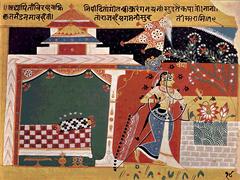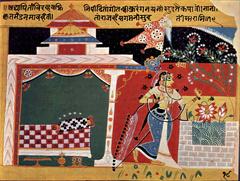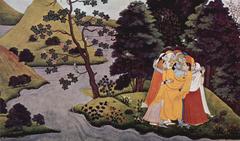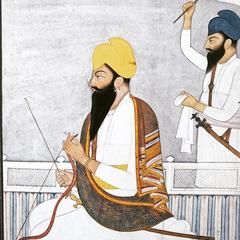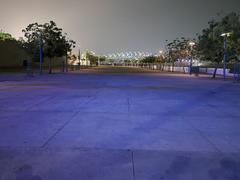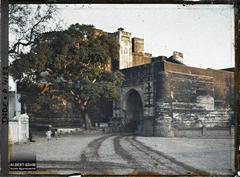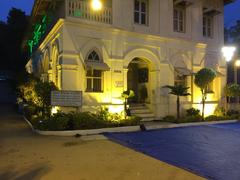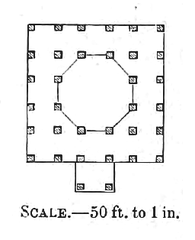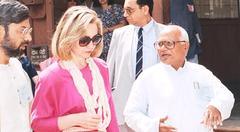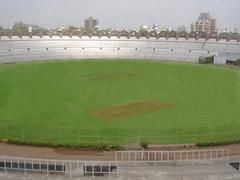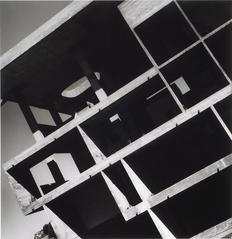
Lalbhai Dalpatbhai Museum Visiting Hours, Tickets, and Historical Significance
Date: 31/07/2024
Introduction
The Lalbhai Dalpatbhai Museum, also known as the L.D. Museum, is a renowned institution located in Ahmedabad, India, dedicated to the preservation and promotion of Indian art and culture. Established in 1956 by Jain Acharya Muni Punyavijayji and industrialist Shri Kasturbhai Lalbhai, the museum was named after the prominent textile magnate Lalbhai Dalpatbhai (source). Initially serving as a repository for Indian miniature paintings, manuscripts, and various artifacts, the collection rapidly expanded, necessitating the construction of a dedicated museum building. This new structure, designed by the internationally acclaimed architect Shri Balkrishna Doshi, was completed in 1984 and officially inaugurated in 1985 by the then Governor of Gujarat, Shri Brajkumar Nehru (source).
The museum’s collection is vast and varied, featuring an impressive array of sculptures, bronzes, manuscripts, paintings, drawings, miniature paintings, woodwork, beadwork, and ancient as well as contemporary coins. Among the notable exhibits is the largest stucco head of Buddha from Gandhara, dating back to the 5th century, housed in the Madhuri D. Desai Gallery (source). The museum not only serves as a cultural treasure trove but also plays a significant role in educational initiatives, including workshops and collaborations with the National Mission for Manuscripts (source). The museum itself is an architectural marvel, reflecting a perfect blend of modern and traditional elements, creating a serene environment for visitors (source).
Centrally located in Ahmedabad, the museum is easily accessible by various modes of transportation and is situated near prominent landmarks such as Gujarat University and L.D. College of Engineering. It is approximately 7 kilometers from the railway station and 12 kilometers from the airport (source). Open to the public from Tuesday to Sunday, the museum offers free entry, making it an ideal destination for both casual visitors and serious art enthusiasts. This guide aims to provide comprehensive information on visiting the Lalbhai Dalpatbhai Museum, including its historical significance, collections, visitor tips, and nearby attractions.
History and Significance of Lalbhai Dalpatbhai Museum
Establishment and Founders
The Lalbhai Dalpatbhai Museum, located in Ahmedabad, Gujarat, India, was established in 1956 through the collaborative efforts of Jain Acharya Muni Punyavijayji and industrialist Shri Kasturbhai Lalbhai. The museum was named after Lalbhai Dalpatbhai, a prominent textile magnate. Initially, it served as a repository for Indian miniature paintings, manuscripts, drawings, bronzes, coins, woodworks, and beadworks (source).
Evolution and Expansion
Over time, the collection grew significantly, necessitating the construction of a dedicated museum building. In 1984, a new structure designed by internationally acclaimed architect Shri Balkrishna Doshi was erected adjacent to the Lalbhai Dalpatbhai Institute of Indology (source). The museum was officially inaugurated in 1985 by the then Governor of Gujarat, Shri Brajkumar Nehru (source).
Collections and Exhibits
The museum boasts an extensive collection of Indian art and artifacts, including sculptures, bronzes, manuscripts, paintings, drawings, miniature paintings, woodwork, beadwork, and ancient and contemporary coins (source). Notable exhibits include the largest stucco head of Buddha from Gandhara, dating back to the 5th century, housed in the Madhuri D. Desai Gallery (source).
Cultural and Educational Significance
The Lalbhai Dalpatbhai Museum plays a crucial role in preserving and promoting Indian art and culture. It organizes workshops and collaborates with the National Mission for Manuscripts to support the conservation and study of ancient texts (source). The museum also features information kiosks within its galleries, providing visitors with easy access to detailed information about the collections (source).
Architectural Significance
The museum building itself is a work of art, designed by the renowned architect Shri Balkrishna Doshi. The structure reflects a perfect blend of modern and traditional architectural elements, creating a serene and contemplative environment for visitors to appreciate the rich cultural heritage on display (source).
Accessibility and Visitor Information
The Lalbhai Dalpatbhai Museum is centrally located in Ahmedabad, making it easily accessible by various modes of transportation. It is situated on the premises of the L.D. Institute of Indology, near Gujarat University and L.D. College of Engineering. The museum is approximately 7 kilometers from the railway station and 12 kilometers from the airport (source).
The museum is open to the public from Tuesday to Sunday, between 10:30 a.m. and 5:30 p.m., and is closed on Mondays and public holidays. Entry to the museum is free for all visitors (source).
Visitor Tips and Guidelines
Visitors are encouraged to check the most current information regarding opening hours and any special events or maintenance schedules before planning their visit. The museum provides a baggage counter for storing personal belongings, as large bags, water bottles, and packages are not allowed inside the museum for safety reasons (source).
For group tours and school visits, it is advisable to contact the museum in advance to help plan the visit and ensure a smooth experience. Guided tours are available for educational institutions, and visitors can schedule these by contacting the museum (source).
Nearby Attractions
When visiting the Lalbhai Dalpatbhai Museum, consider exploring nearby attractions such as the Sabarmati Ashram, Sidi Saiyyed Mosque, and the Calico Museum of Textiles. These sites offer additional insights into the rich history and culture of Ahmedabad.
Travel Tips
- Best time to visit: Plan your visit during the cooler months from October to March to enjoy a comfortable experience.
- Transportation: Utilize local transportation options such as auto-rickshaws, taxis, or buses to reach the museum conveniently.
- Accommodation: Numerous hotels and guesthouses are available in Ahmedabad to suit various budgets and preferences.
FAQ
What are the visiting hours of the Lalbhai Dalpatbhai Museum?
The museum is open from Tuesday to Sunday, between 10:30 a.m. and 5:30 p.m., and is closed on Mondays and public holidays.
Is there an entry fee for the Lalbhai Dalpatbhai Museum?
Entry to the museum is free for all visitors.
How can I schedule a guided tour at the museum?
Guided tours for educational institutions can be scheduled by contacting the museum in advance.
Conclusion
The Lalbhai Dalpatbhai Museum stands as a testament to India’s rich cultural and artistic heritage. Its extensive collection, combined with its educational initiatives and architectural significance, makes it a must-visit destination for anyone interested in exploring the depths of Indian art and history. Plan your visit today and immerse yourself in the captivating world of Indian art and history. For the latest updates and more information, download the Audiala mobile app, explore related posts on our website, and follow us on social media.
